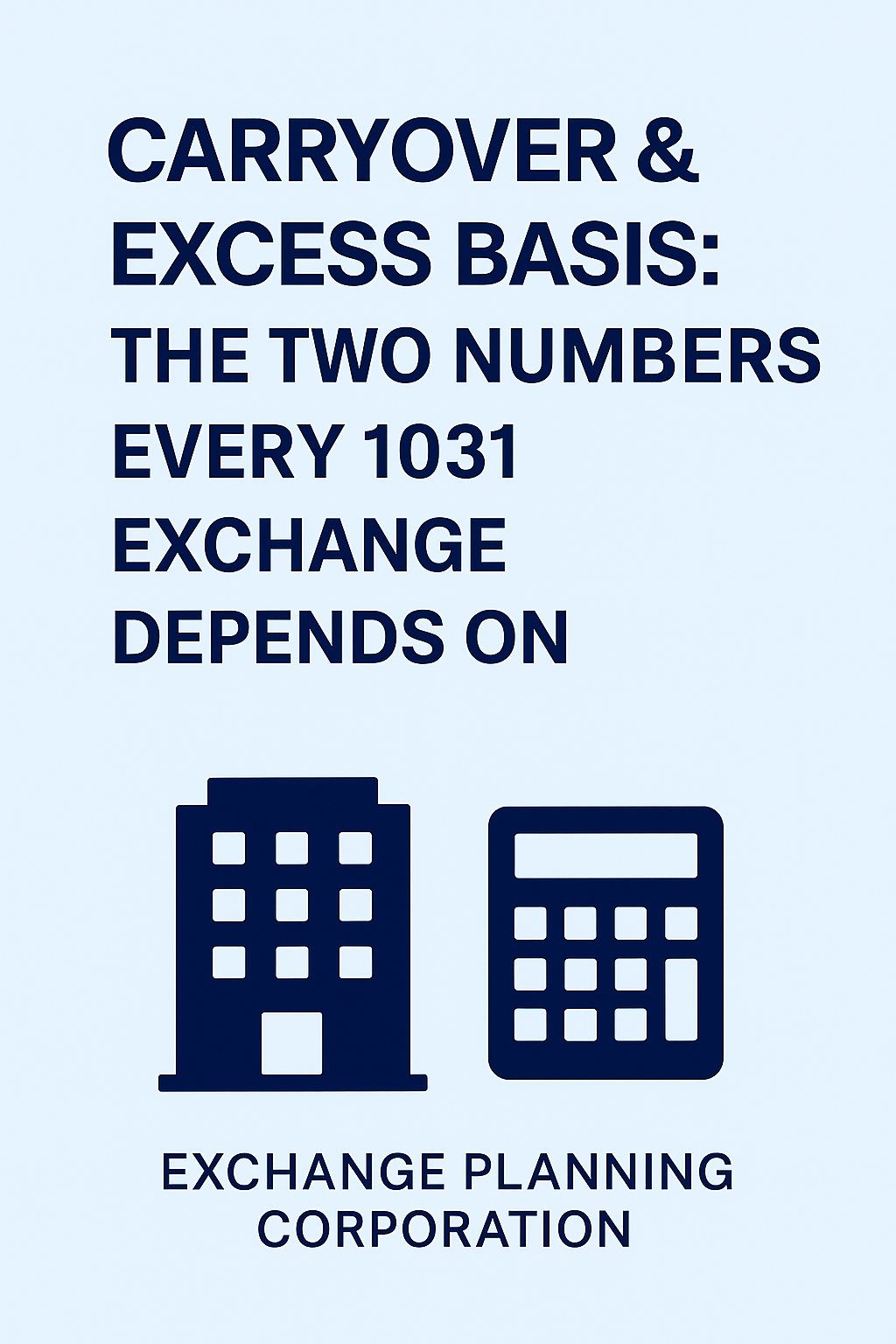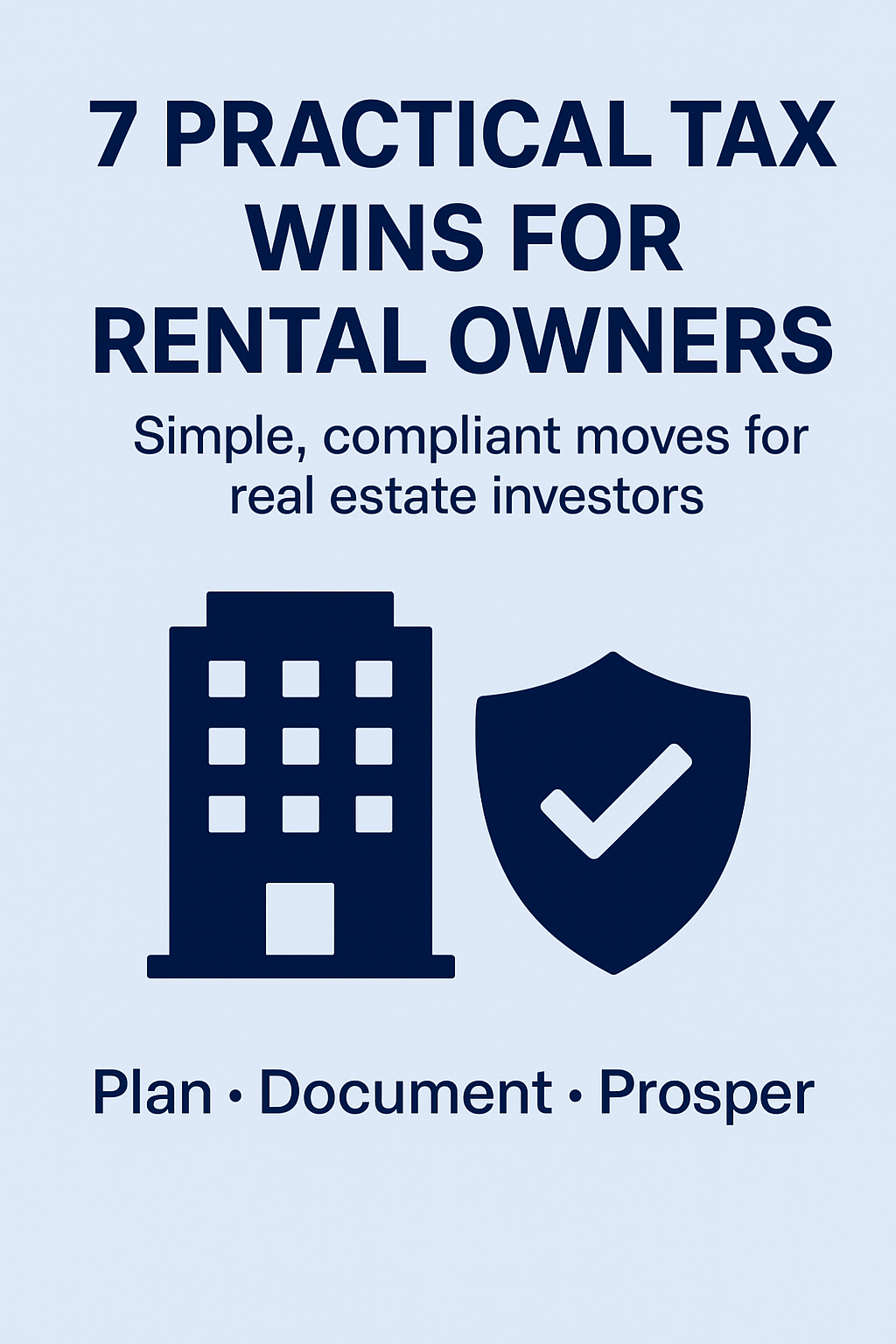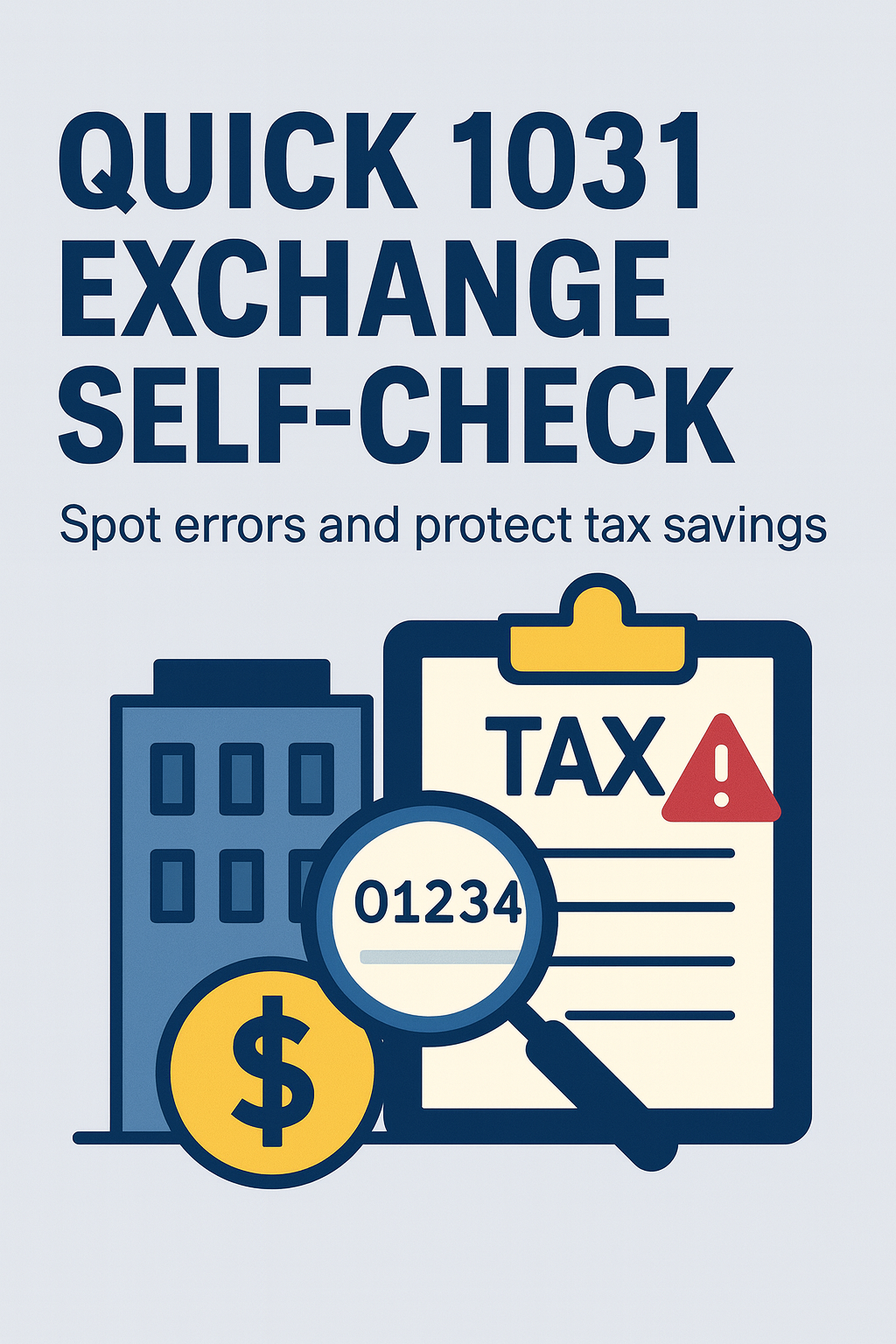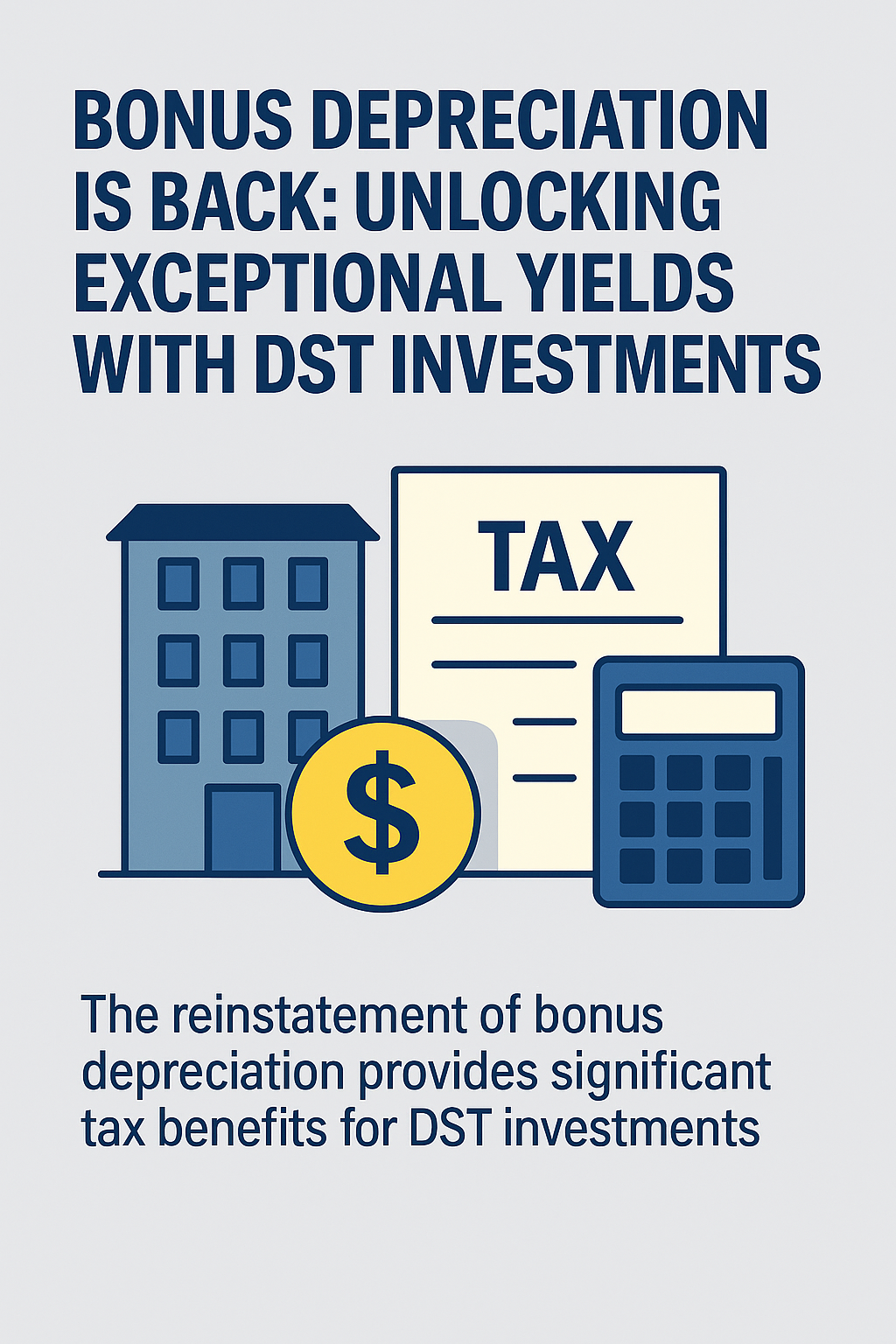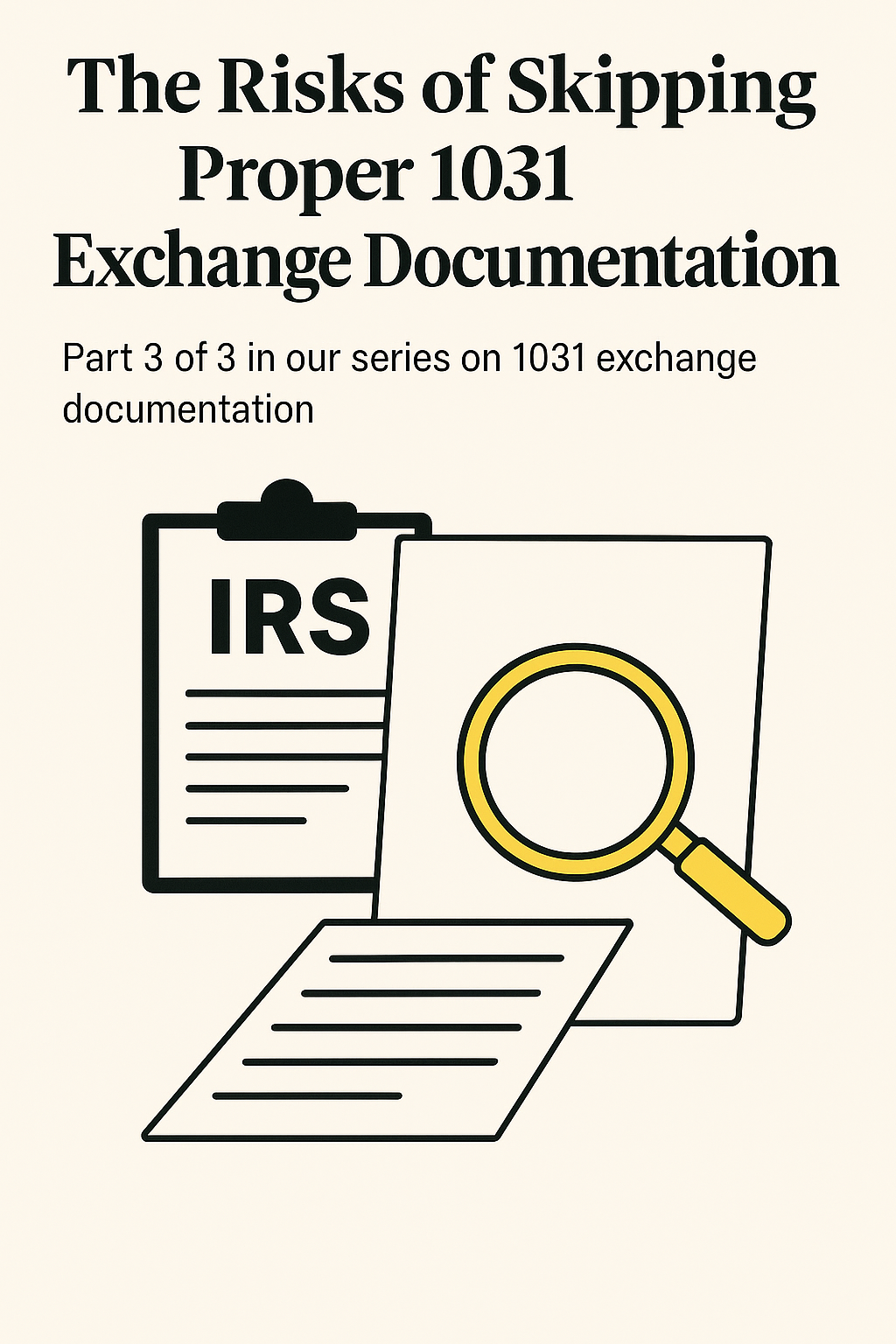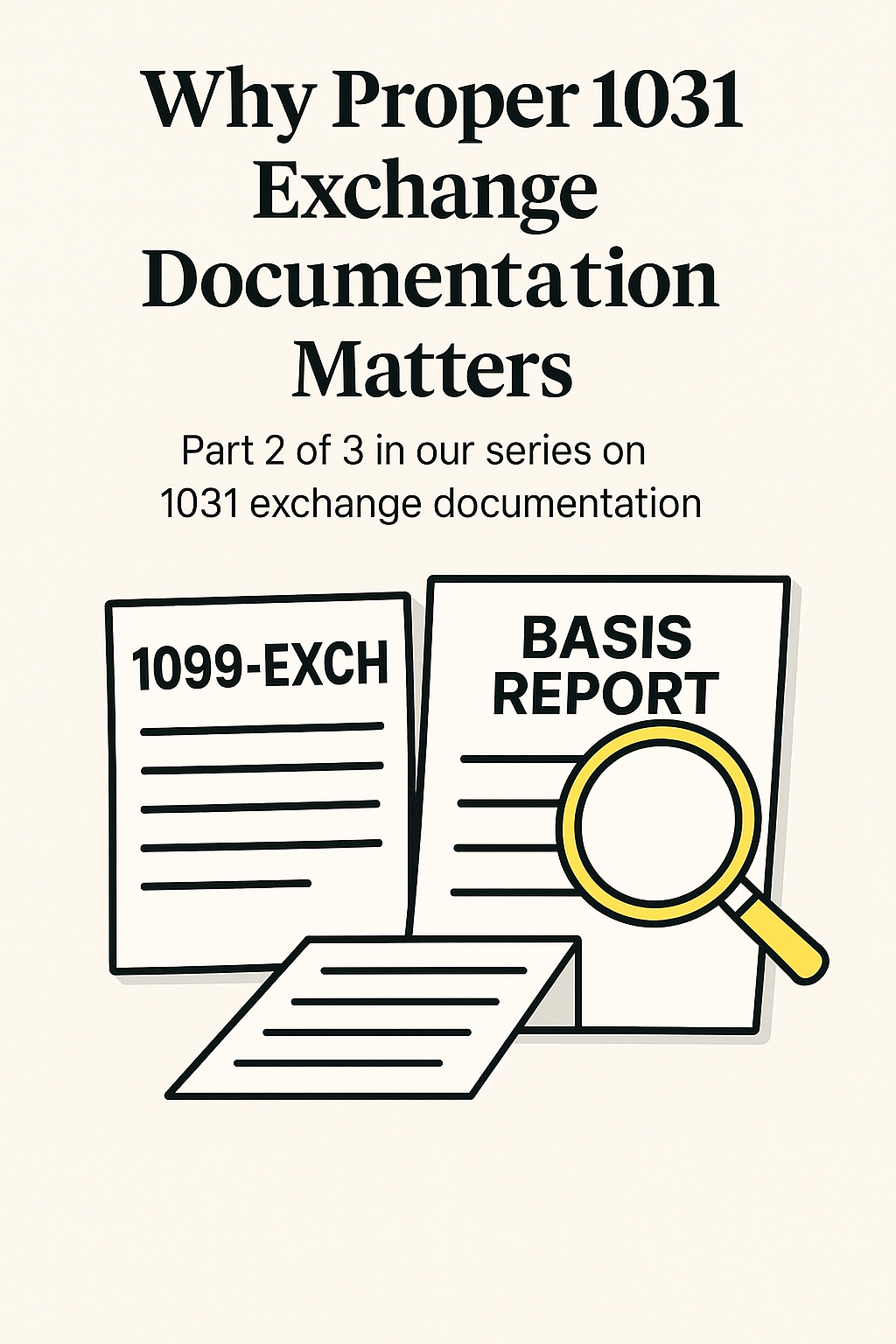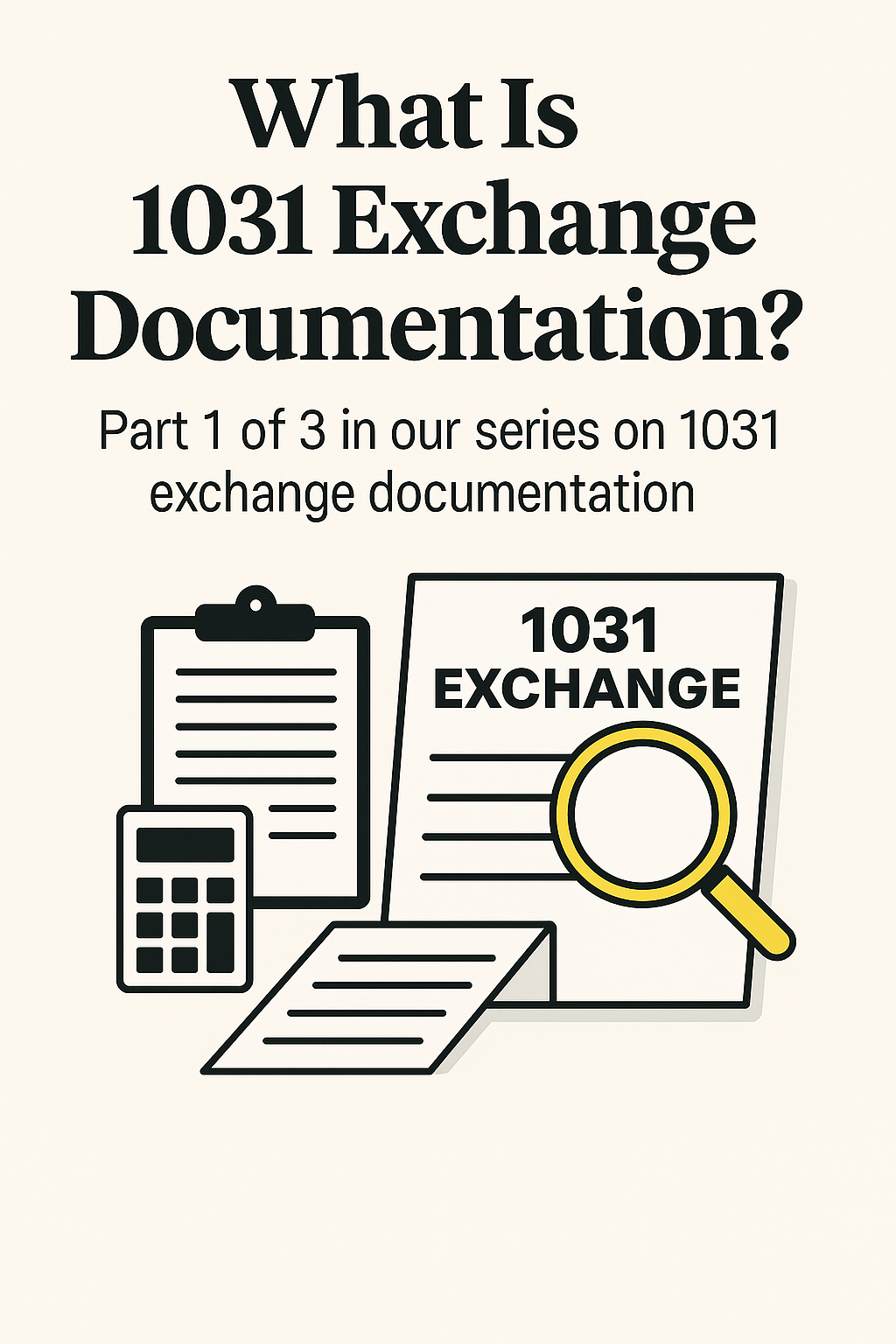If you own rentals, you already know real estate rewards discipline: you fix things before they break, you screen tenants carefully, and you keep the books reasonably clean. The tax code works the same way. When you treat your rentals like a business—nothing exotic, just simple habits—you unlock deductions that most investors leave on the table.
This post is a guided walk-through of seven moves we help clients implement all the time. They aren’t tricks. They’re small shifts in how you plan, document, and—on the big one—how you use leverage inside a compliant 1031 exchange to expand depreciation without personally signing for new debt.
Let’s start at the dinner table and end with a million-dollar repositioning.
1) The Dinner You Were Already Having
Imagine you and your spouse sitting at your favorite local place. If your spouse actually works in the rental business (co-owner) and you spend part of that meal talking about a new business decision—raising rents, approving a rehab, hiring a property manager—that’s generally a deductible business meal. The difference between “nice dinner” and “business dinner” isn’t the tablecloth; it’s the purpose and a few lines of notes afterward.
Write down who was there in a business role, where you were, what you discussed, and any decision you made. Snap a photo of the receipt. That’s it. Half the cost is typically deductible, and you were going out anyway.
2) The Miles You’re Already Driving
Every investor drives: to the bank, Home Depot, a showing, a contractor meeting. Those miles add up quickly—if you capture them. The IRS wants a contemporaneous log, which is a fancy way of saying “record it as you go.”
Use a simple app or a notes doc. For each trip: date, total miles, where you went, and a one-line purpose. The difference between “we think it was about 2,000 miles” and “here’s my log” is the difference between a haircut and a deduction that sticks. If you don’t have a log the IRS can cut the deduction from 50-75%
3) “We Can’t Deduct Medical”… Maybe You Can
This one surprises people. If your spouse genuinely works in the rental business, you may be able to put them on payroll and offer a compliant health-reimbursement plan as an employee benefit. Done correctly, family medical costs can be reimbursed pre-tax by the business. The keys are exactly what you’d expect: real duties, reasonable pay, a proper plan document, and payroll handled the right way. It’s not for everyone, but when it fits, it’s meaningful.
4) The Grandkid Trip That’s Also a Scouting Trip
You’re heading to Colorado to see the new grandbaby. Wonderful. If you also schedule property tours, meet with a broker, or walk neighborhoods with a clear investment purpose, you’ve turned a personal trip into a business-first trip with deductible travel. You don’t have to make the vacation disappear; you just need the primary purpose to be business and the paper trail to show it. Put the appointments on the calendar before you go and jot a few notes each day. Travel days count when you’re actually traveling for business—don’t overthink it. If your trip is longer than 7 days, at least 75% of it must be for business—travel days count as business days—so on a 10-day trip you’d need at least 7 business days.
5) Put the Kids (or Grandkids) on Payroll—And Teach Them Something
Real work deserves real pay, and that’s true in your rental business too. There’s plenty of age-appropriate work: turn-day cleanup, yard work, scanning receipts, labeling unit photos, simple data entry with supervision. You’re not “paying your kid to be your kid.” They can earn up to $12,000 of earned income tax free. You’re paying them to do a job you can describe and measure. Keep a short job description, timesheets, and pay them reasonably. You get the deduction; they get earned income and a powerful lesson in how money really works.
6) Turn “Helping Out” Into Honest-to-Goodness Work
Many investors already support a relative. If that person can do legitimate work for your rentals, change the arrangement from informal help to wages for services (employee or contractor, depending on the role). You haven’t changed your generosity; you’ve changed your paperwork. The business gets a deduction, and the person doing the work has income that matches reality.
7) The Big Lever: 1031 + DST = More Basis, More Depreciation—Without Signing a Loan
Here’s where order and planning pay off in a big way.
Suppose you own a property free and clear and sell with $1,000,000 of equity. You complete a 1031 exchange into a Delaware Statutory Trust (DST)—institutional-grade real estate that already has financing at the property level (think ~50% loan-to-value). Your $1,000,000 of equity, plus your pro-rata share of the DST’s nonrecourse debt, gets you into $2,000,000 of real estate without you personally signing a new mortgage.
Why does that matter? Because for tax purposes you’re treated as owning your slice of the real estate. That means:
- You get $1,000,000 of new basis to depreciate. Often this can help you collect $300,000 of depreciation deductions over the next five years, saving $100,000 in taxes
- If you live in a tenant friendly state like California, you can use this transaction to move to a more landlord friendly, less regulated state.
- The new depreciation can increase your after-tax income by 50%.
Put simply: exchanging your debt-free $1,000,000 into a $2,000,000 DST lets you step into a larger depreciable basis and your share of interest—often totaling roughly $300,000 of deductions over about five years—without taking on personal loan liability.
One more practical perk: if your old property had a mortgage, the DST’s built-in nonrecourse debt helps you replace that debt inside the exchange and reduces the risk of taxable boot. In other words, you meet the exchange rules without visiting a bank or proving anything about your personal balance sheet.
Why We Keep Pushing “Review It”
We’ve reviewed many exchanges over the years. Recently, we did an audit and found that 93% of the exchanges we reviewed over 6 months needed changes to fix basis calculations, tighten documentation, or address missed opportunities. None of those clients were trying to be clever. They just didn’t have a second set of eyes. If you’ve done an exchange or you’re planning one, a short review can preserve deductions you’re counting on.
Bringing It All Together
The thread through all seven moves is simple: behave like a business and document like a professional. You don’t need a new personality, just new habits:
- Write a couple of lines after the dinner you were already going to have.
- Log the miles you were already going to drive.
- Formalize the work family members already do.
- And when it’s time to reposition capital, use the structures that multiply depreciation without multiplying your personal risk.
If any of this feels like “I could do that, but I won’t unless someone sets it up,” that’s exactly what we do. We’ll tell you quickly which ideas fit your entity and your state—and we’ll model what a 50%-leveraged DST could look like with your numbers.
Want a second look at a past or pending exchange? Book an Exchange Review. Ten minutes in, you’ll know whether we can save you tax—or give you peace of mind that you’ve already nailed it.



